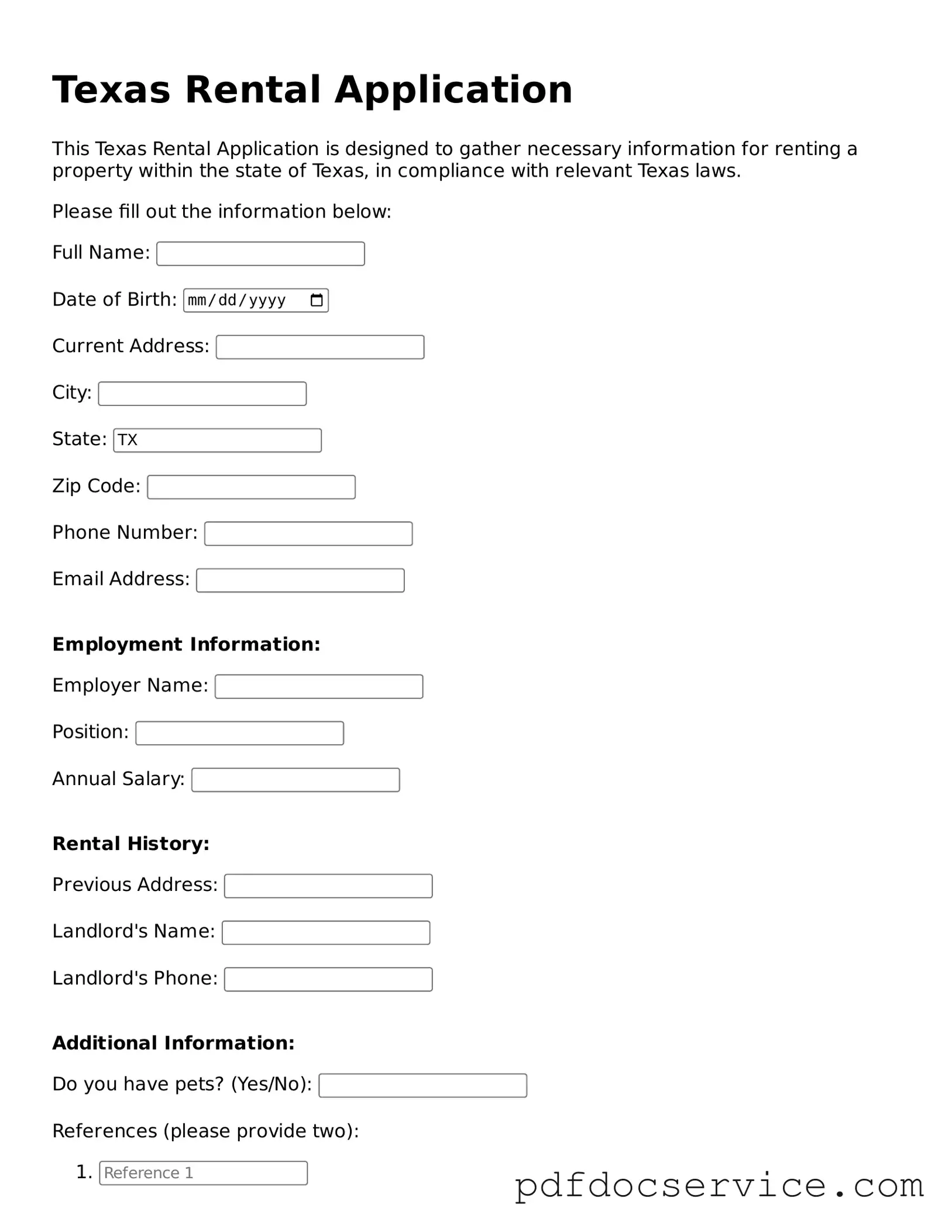The Texas Rental Application form is a document used by landlords and property managers to collect essential information from prospective tenants. This form typically includes details such as the applicant's employment history, rental history, personal references, and financial information. It helps landlords assess whether a potential tenant is suitable for renting their property.
Why do I need to fill out a rental application?
Filling out a rental application is a standard procedure that helps landlords make informed decisions about tenants. It allows them to verify your background, check your credit history, and confirm your ability to pay rent. Completing the application accurately increases your chances of securing the rental property you desire.
Most Texas Rental Applications will ask for the following information:
-
Personal details, such as your full name, contact information, and date of birth.
-
Employment history, including your current employer, job title, and income.
-
Rental history, detailing previous addresses, landlords' names, and duration of stay.
-
References, often including personal and professional contacts.
-
Financial information, such as bank accounts and any additional sources of income.
Is there a fee associated with the rental application?
Yes, many landlords charge a non-refundable application fee to cover the cost of background checks and processing the application. This fee can vary widely, so it's important to ask the landlord or property manager about the amount before submitting your application.
How long does it take to process a rental application?
The processing time for a rental application can vary. Typically, it takes anywhere from 24 hours to a few days. Factors that can influence the timeline include the responsiveness of previous landlords or employers and the thoroughness of the background check. It's advisable to follow up with the landlord if you haven't heard back within a reasonable timeframe.
What happens if my application is denied?
If your application is denied, the landlord is required to provide you with a reason. This could be due to poor credit history, insufficient income, or negative references. You have the right to request a copy of your credit report, which may help you understand the basis for the denial. Additionally, you can work on addressing any issues before reapplying in the future.
Can I apply for multiple rental properties at once?
Yes, you can apply for multiple rental properties simultaneously. However, be aware that each application may require a separate fee and different documentation. It's essential to keep track of where you have applied and any deadlines associated with those applications.
What should I do if I don’t have a rental history?
If you do not have a rental history, you can still apply for a rental property. In such cases, landlords may consider other factors, such as your employment stability and income. Providing references from employers or personal contacts can also help demonstrate your reliability as a tenant.
Do I need to provide a co-signer?
A co-signer may be required if your credit history is lacking or if your income does not meet the landlord's criteria. A co-signer agrees to take on the financial responsibility of the lease if you are unable to pay. It's best to discuss this option with the landlord before submitting your application.
How can I ensure my application stands out?
To make your rental application more appealing, consider the following tips:
-
Fill out the application completely and accurately.
-
Provide all requested documentation promptly.
-
Include personal references who can vouch for your character.
-
Be prepared to explain any potential red flags in your background.
-
Maintain good communication with the landlord throughout the process.
